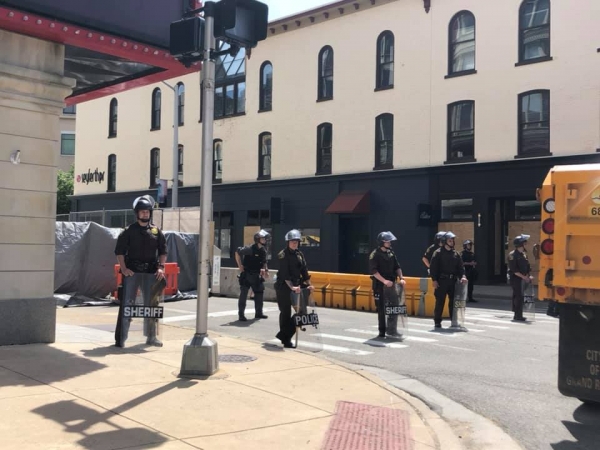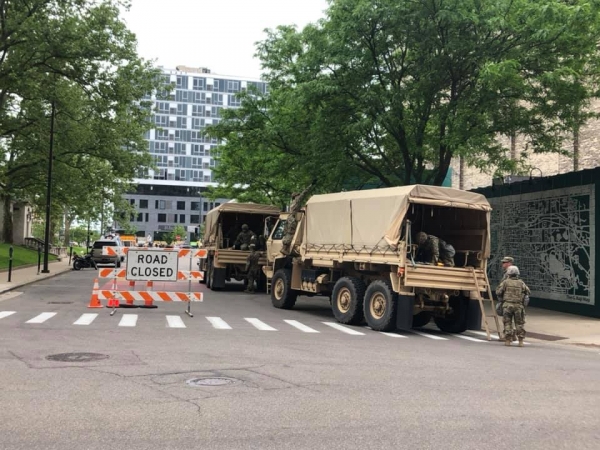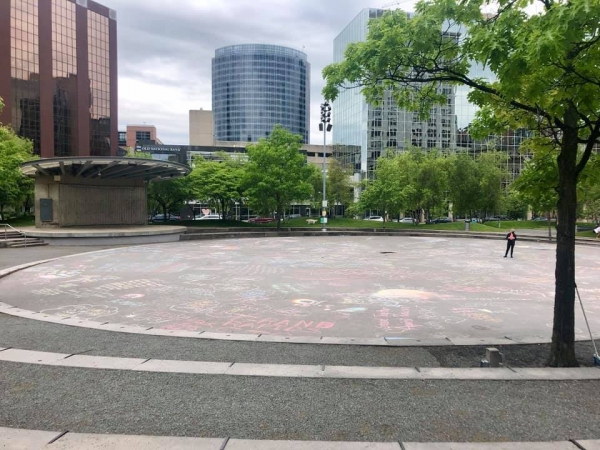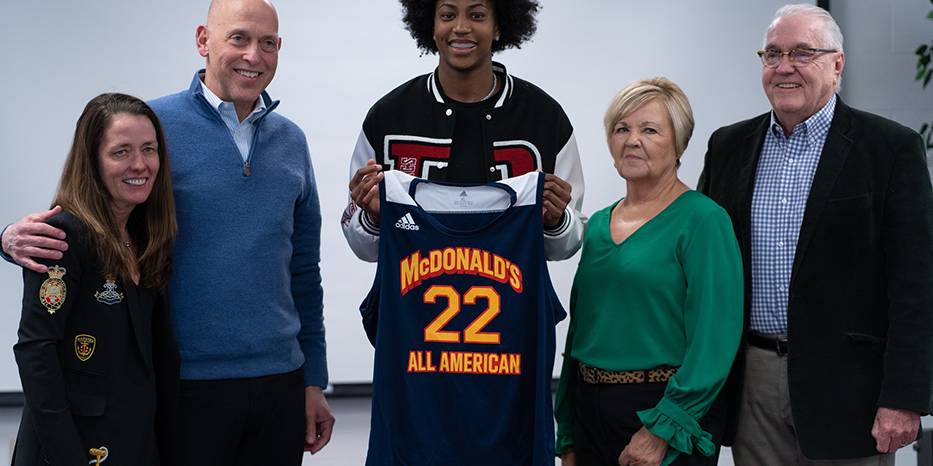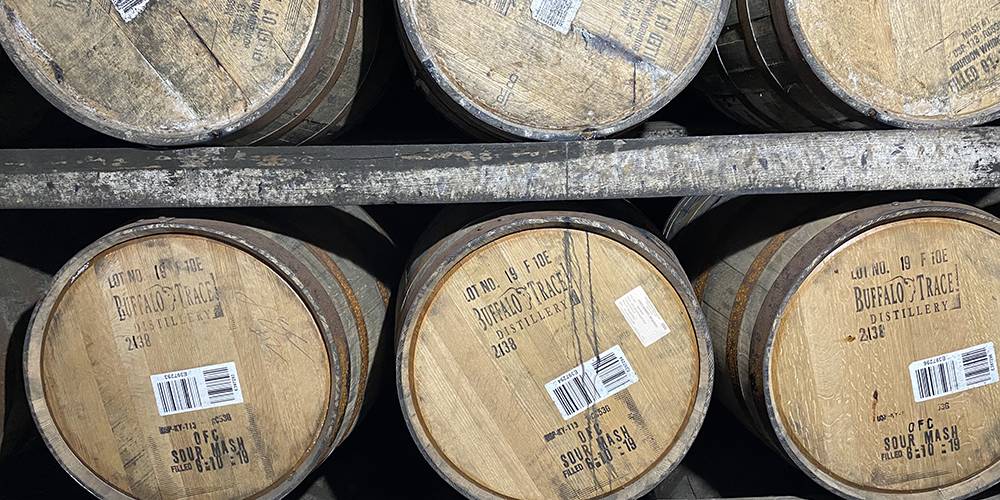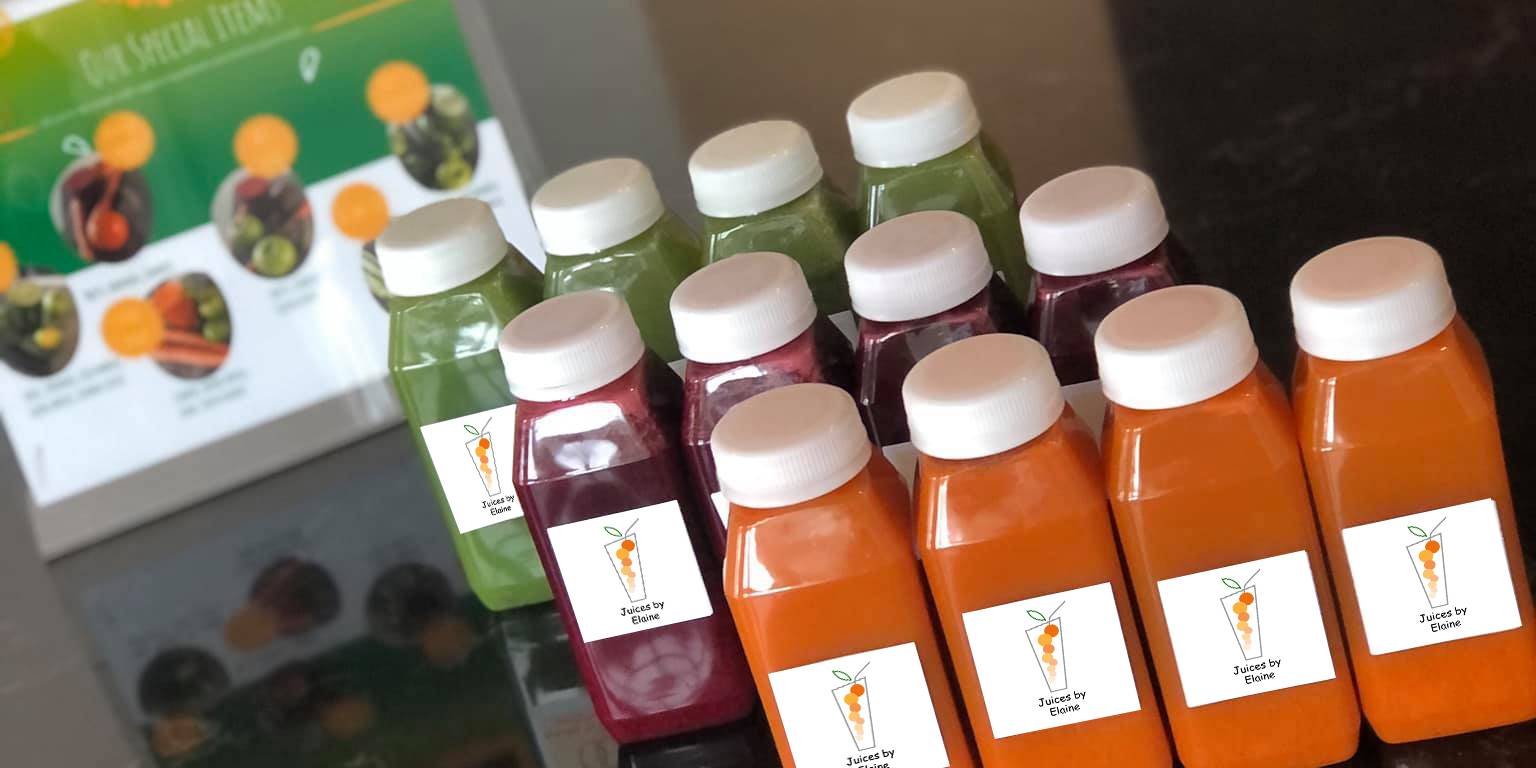In Michigan, we crave that renewed energy spring brings us each year – the sunshine, the warmer days, the blooming botanicals. Last March, when the first day of spring was finally back in sight, we began to climb out of the yearly winter slumber only to be smacked by COVID-19’s rippling quarantine effect.
Our everyday routines came to an abrupt halt as we sheltered in place.School and office buildings shutdown. Stores ran out of toilet paper and cleaning products.
Restaurants and bars closed, some introducing take-out for the very first time. Sports on all levels were suspended until further notice. One by one, concerts and live events and celebratory community gatherings were canceled for the unseeable future.
Life as we knew it just … stopped.
In the days and months ahead, we turned to various video conferencing platforms daily for remote education and work. This became our lifeline to the outside world as we set up makeshift office spaces in our kitchens, bedrooms and basements.
When the school and work day “ended,” we turned to baking desserts and piecing together puzzles. We watched virtually everything on Netflix, and caught up on shows and movies in our living rooms. We tackled home improvement projects and cleaned out our long-forgotten storage rooms. We ventured outside with our immediate families – playing games, going for walks and riding bikes.
Many of us tried to just stay afloat as we juggled the unknowns of the COVID-19 pandemic, among other responsibilities. I’ll admit, some days were just plain awful and took an enormous effort just to stay sane.
What we thought would last for only a few weeks stretched on for months. Now, a year later, we’re still not out of the pandemic’s grasp. Not quite yet. As of March 24, 2021, Michigan has reached over 701,000 COVID-19 cases and over 16,900 COVID-related deaths, while the U.S. has seen over 30 million cases and over 543,000 deaths. These numbers are haunting.
It’s surreal to imagine how much of our daily lives has changed throughout the past 12 months. The way we gather and converse with friends and family. The way we dine in restaurants or go out on the town. The way our children learn in school. The way we work. The way we play or watch sports and other activities. The way we travel. The way we spend our free time. All of this has changed in some capacity, and in certain cases, it has exposed the socioeconomic inequalities in resources across our state and country.
But for the sake of public health, we all did our best just to make it through the day, then the next day and the next, like a never-ending run on a hamster wheel. It was – and still is – exhausting.
Related: Quarantine Confessions: The perils of parenting, working and homeschooling amid COVID-19
After a couple months, hospital numbers showed a steady decline spurring a phased lifting of the quarantine/stay-home restrictions. Little by little, life began to bloom again. People were allowed to gather in small groups of friends and extended family. Businesses welcomed back a fraction of their employees. Retail stores opened doors to shoppers. Restaurants and bars opened for in-person dining. A handful of summer sports and activities resumed.
But re-opening in a now pandemic world meant new safety protocols: wear a mask, social distance.
Ahhh the face mask. Who knew a covering over a person’s mouth and nose to mitigate the spread of COVID-19, which is transmitted through respiratory droplets from coughing, sneezing, or talking, would become such a contentious topic in today’s society? From mask wearing to mask shaming, our country has politicized the pandemic, contributing to the ever-growing deep divide within our political climate.
The divide intensified with the 2020 murders of George Floyd, Ahmaud Arbery and Breonna Taylor. We saw a widespread surge in protests, rallies and riots throughout the nation, including our own local city of Grand Rapids, as the country strongly expressed clashing viewpoints.
Riots and Revival
I remember turning on the late-night news on Saturday, May 30, 2020, and seeing the destruction happening downtown Grand Rapids. Rioters smashed building windows with bats and street signs or threw other large objects into panes of glass, set cars and dumpsters ablaze, graffitied and looted local businesses, including mom and pop stores and restaurants.
I recognized every single spot the rioters tore apart. I walk pass these landmarks every week day on my way to and from the SeyferthPR office on Monroe Center. I visit them during my lunchtime adventures around the city, or the occasional after-work happy hour.
My stomach churned. I was in shock. I was saddened. Saddened for the business owners who would have to pick up the broken pieces while also struggling to survive due to pandemic restrictions. Saddened for the city of Grand Rapids.
The footage from that night is daunting – even now, nearly 10 months later.
Then, at dawn, the helpers came. And they came in droves, sweeping broken glass from streets and sidewalks, scrubbing graffiti off building walls, helping business owners board up windows, handing out water and food, filling Rosa Parks Circle with chalked messages of hope, inspiration and community comfort.
When I returned to the SeyferthPR office two days later, downtown was eerily empty. Oversized city trucks and plows barricaded a portion of downtown – the portion where I work every day.
I walked down Fulton Avenue for about two blocks … in the middle of the road. It was calm and desolate, a stark contrast to its typical daily gridlock. Police and sheriff’s officers were visibly patrolling the streets throughout the day, joined by the National Guard as word spread of an unpermitted protest later that afternoon. As my colleagues and I cleared out of our downtown office early, we were met with National Guardsmen and their Humvees stationed outside our building. I’ve always felt safe in the city. Though seeing their presence for the first time made me a bit uneasy.
In the days that followed, the wooden plywood window and building coverings became blank canvases for works of art. Plywood paintings colored the cityscape with messages and symbols of civil rights, racial equality and peace, reviving community spirit.
Hope for 2021 and Beyond
As the summer sun dwindled, West Michigan school districts finalized return-to-school safely plans and protocols. Hotly debated among parents, teachers and administrators, a few districts chose to remain virtual, while others offered in-person or virtual learning. There was no great solution to this moment in education, just a “best we can” intention. The same held true for sports and youth activities. Plans were made, then scraped and re-made again. Repeat.
All have remained resilient throughout the entire year. With the constant ebb and flow of new COVID-19 rules and protocols bombarding us at any given time, players, coaches, teachers, students and parents have all become masters of unpredictable chaos.
In the famous words of rock band, Grateful Dead, “what a long, strange trip it’s been.” Now, a full year living in a pandemic and politically-charged society, I’ve learned a lot and experienced even more. I now loathe the overused pandemic clichés of “unprecedented” and “pivot,” which pleasantly rolled off the tongue pre-pandemic. Add “new normal” to that list as well. This pandemic life is no longer new, nor is it normal. Do we even know what normal is anymore?
As COVID-19 cases and its variants linger among us, who knows what the next 12 months will look or feel like for us a country and as individuals. All we can do is hope. Hope for our health. Hope for our nation’s health. Hope for a COVID-free tomorrow.

Kyle Moroney
Senior Writer
Related Posts
Full-circle: returning to my high school gym for a client event with a McDonald’s All-American player
When the McDonald’s All-American Game…
How an introduction to bourbon making taught me an appreciation of the Bluegrass State
Often, I’ve traveled without gaining a…
Juices by Elaine – Using public relations to help a new business grow
Public relations isn’t just about…




